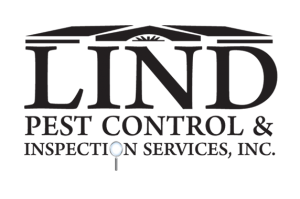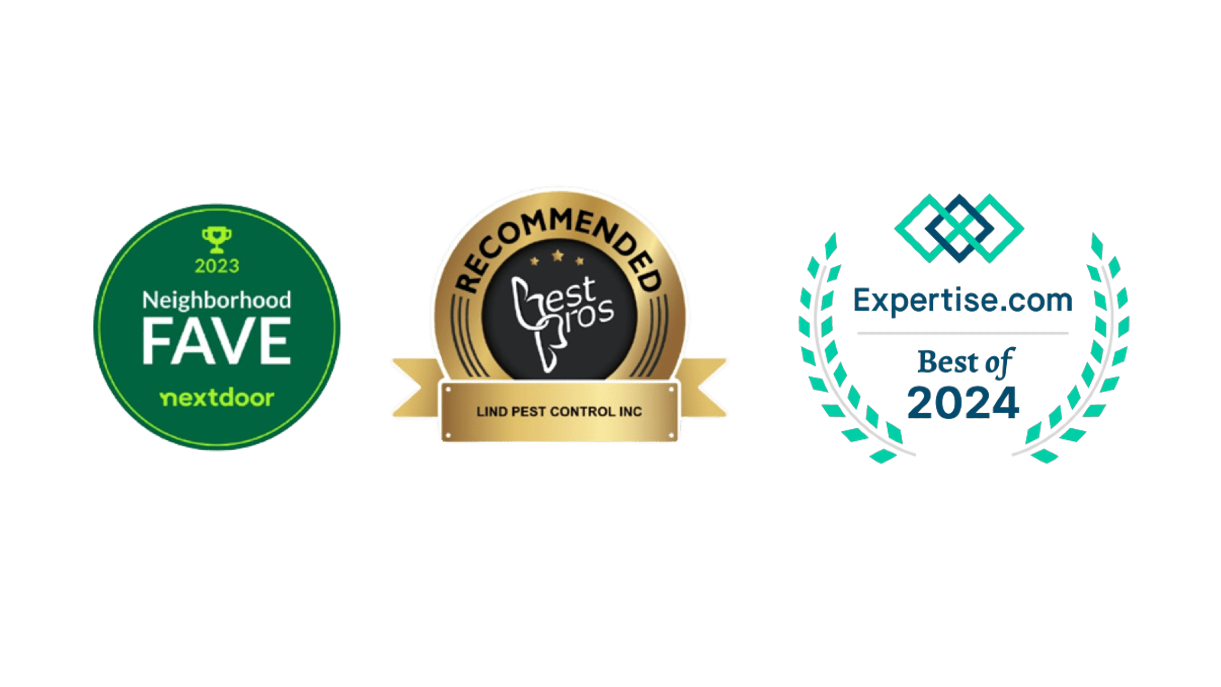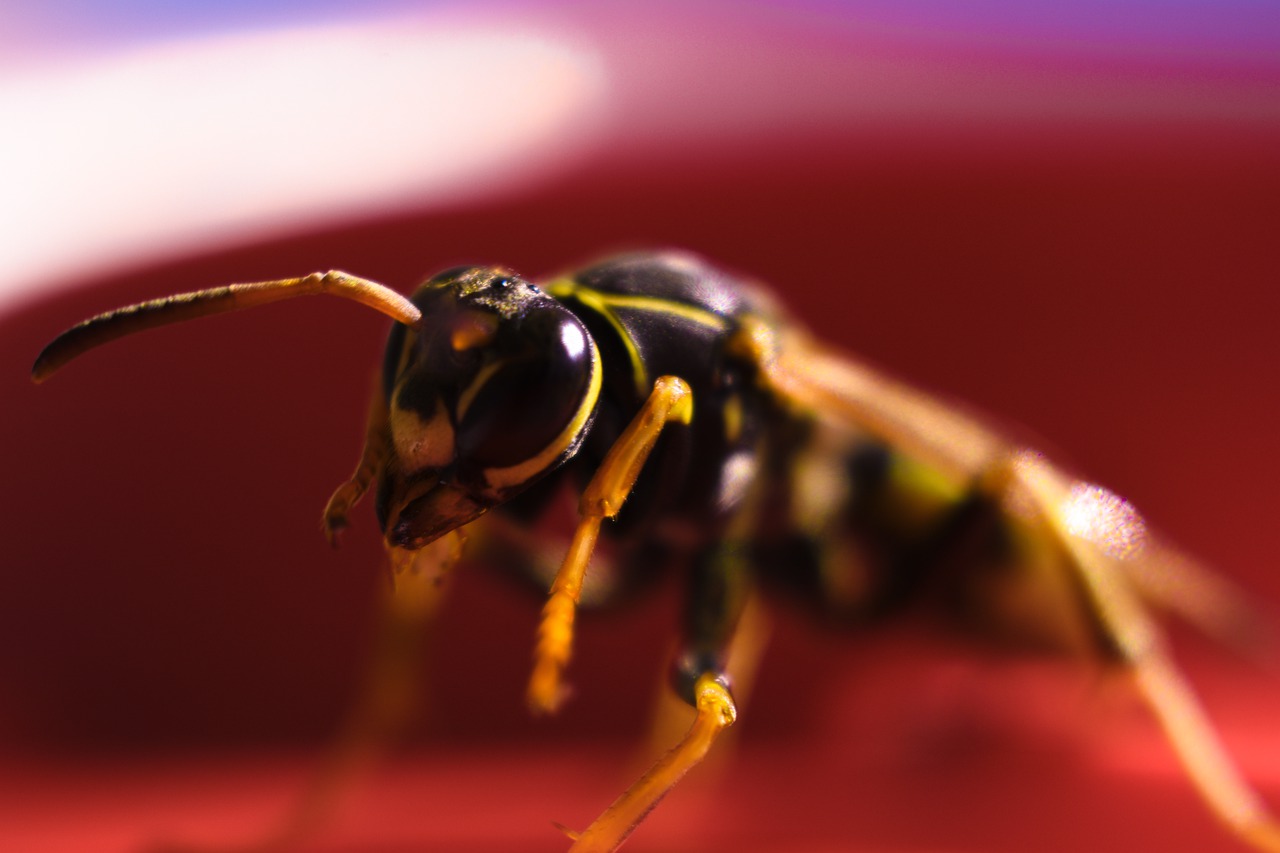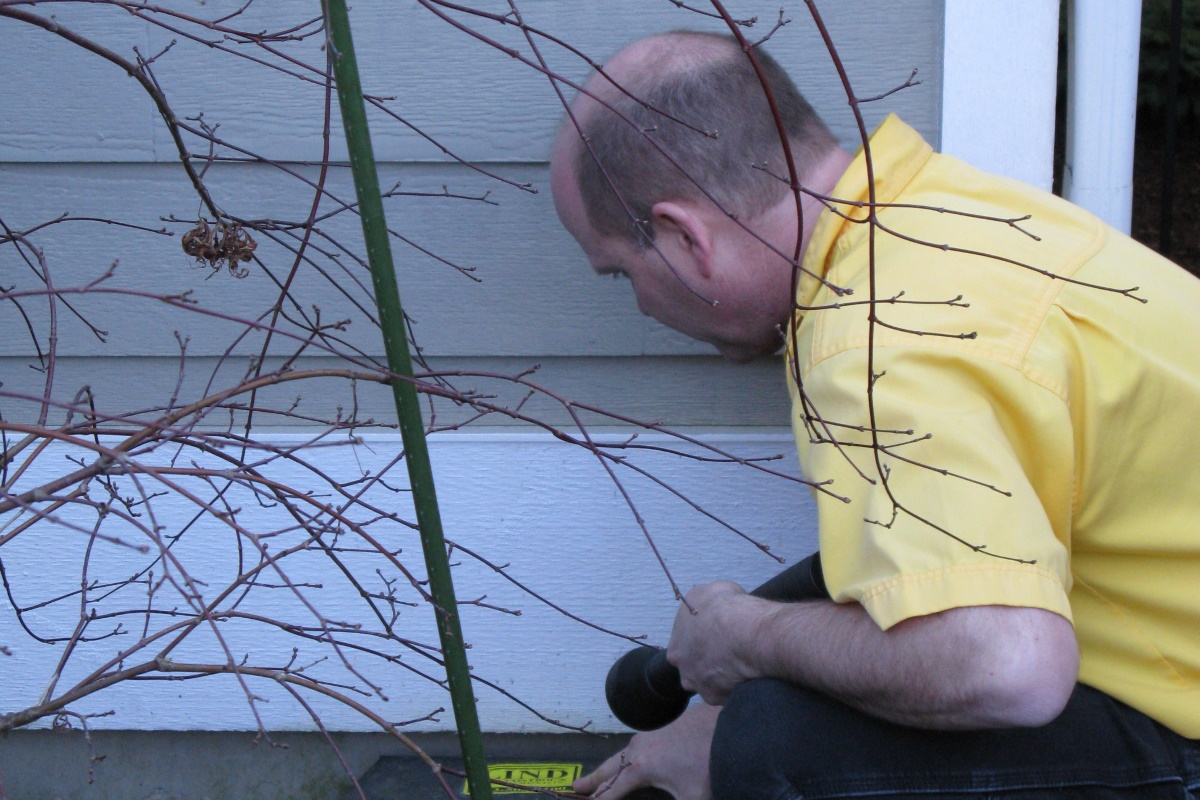THE IMPORTANCE OF PEST IDENTIFICATION
We received a call yesterday from a homeowner in University Place. She was having several pest issues at their home. “termites”, rodents, and bees/wasps. After speaking with her, in depth, on the phone, we set up a same day appointment to go out to her home and spend some time inspecting and evaluating these issues. Upon arrival, we met a very nice couple who filled us in on the areas of concern etc. The matters at hand were:
- Bees and wasps flying all around their deck in the afternoons and evenings
- 1 mouse they found (and killed) in their kitchen pantry
- “Termites” coming out of a log by their detached garage
Armed with this information, flashlights in hand, Keith and myself proceeded to do a thorough sweep of the house, garage, and outlying property. We found the house and property to be in pretty good shape without a lot of conditions that would attribute to high pest volumes and/or infestations (other than some brush and trees in close proximity to the house and garage and firewood being a little too close to the garage structure).
The bees and wasps.
The bees and wasps they were experiencing were the same all of us are experiencing in the summer months. Namely, aggressive yellow jackets in search for food while dive bombing us and interrupting our serene outdoor living spaces. There were no signs of nests within, or attached to, the buildings and none on the property whatsoever.
Looking for rodent droppings.
The scenario was that they had left their back door open the other day. Soon after, they found a mouse in their kitchen pantry adjacent to the back door. They have a tabby cat (a pretty good-sized orange one named “Gnars” which is short for Gnarly) and they had never experienced any other rodent issues for the many years they have been living there. We did not see any other droppings nor nesting spots in the house, nor entry points from the outside-into the house.
Termites or Ants?
Finally, we went to the log and adjacent pile of firewood where the “termites” were spotted emerging and flying out the day before.
Keeping in mind the woman’s description, the location, the source, and the time of year, I was 99.9 positive we were going to find Moisture Ants and not “Termites”. When we turned the log over, my suspicions were confirmed.
A closer look (video).
These ants were in an old log that had obviously been there for quite a while. Do you see the reddish, brownish, almost translucent colored ants in the video? These are moisture ants. The larger, darker colored ones, with wings, are also Moisture ants, not “termites”. The difference being the smaller, lighter colored ones are “workers” and the winged ones are reproductives. We get calls, all of the time, from folks who assume that when they are seeing flying ants, they are termites. The rule is That ALL reproductive stages (male and female) of ants and termites have wings. The workers do not.
The sawdust you see dispersed, all around the area, is from the excavation of the wood by the ants. They do not eat wood like termites do. The “holes” you see them going in and out of are their galleries they are creating to nest in. Moisture ants are a secondary pest!!! They must have moist/wet wood in order to inhabit the area. If you have an issue with a leak within your home (perhaps a toilet, tub, shower, sink, etc.) they will move in and create more damage, but the main issue, and the condition that needs to be fixed is the moisture source itself and then removing and replacing of the damaged materials.
Do you see the spider? We often see spiders within, and close proximity to, ant colonies. The ants certainly don’t look fearful do they? The spiders are opportunistic feeders that are preying on these insects from a very close proximity. They catch and “eat” only as much as is necessary, and the busy ants have a much more important job, and destiny, to worry about which one of them will fall prey today. A little morbid, but such is the way of the insect world.
PEST SOLUTIONS AND OPTIONS
Our inspection and evaluation, of the home and property, took about an hour to complete. Upon completion, we met with the homeowners to discuss our findings. I was careful not to speak too much of the “particulars”, of each pest to her, as she did not want to know these. (We get this request often when people are a little squeamish of bugs and rodents). I spoke about options for them, which they were very thankful to hear.
My first option was to do nothing.
Nature was happening around them and we can do little to stop that. Bees and wasps were out and about, Moisture ants were in a decaying log and would not transfer over to the structures as there were no excessive moisture issues within. The mouse that they found and killed was most likely a solitary incident from the door being left open for a long period of time. The cat was a great mouser ( it would be different if there were a rat situation, as rats are very formidable foes to cats) who roamed the interior and exterior freely
My second option: Be a little more aggressive and weigh on the side of precaution and prevention.
We respect mother nature to the fullest, and even though we don’t want to change it, we can make it more comfortable for us in our living environments. I spoke to them about a treatment around the perimeter of the house and garage. This would include treating around the undersides of the eave soffits, downspouts (it is important to keep gutters and downspouts clean), and all kinds of nooks and crannies around the house and garage that yellow jackets and ground crawling insects might like to infiltrate to nest.
The rodent (mouse) issue seemed to be an area we could control from the exterior. We would place a tamper proof bait station that would house bait, which would control outdoor rodent populations (including rats). We would install it near the garage chain link fence that was overgrown with ivy (a natural habitat for rodents) and bordering the neighbor’s property which was full of old trailers, cars, and other miscellaneous stored items and junk(another rodent habitat).
I also encouraged them to look into yellow jacket traps, and to hang them up AWAY from occupied areas around the house and yard. It took them about 10 seconds to opt for plan B. We completed these treatments for a minimal fee and they signed up for ongoing preventive maintenance on a quarterly basis.
An honest evaluation.
There are a lot of pest situations which are cut-and-dry and we can give a fair assessment and price over the phone. Then there are other times that require our time and assessment on-site. We are licensed professionals who want to make certain we assess situations correctly and fully. This takes considerable time to complete and we charge accordingly. It is a minimal fee for our inspection work, and you can be assured that your home is being evaluated and inspected to the fullest.
There are a lot of companies who would have been glad to tally up a treatment price for rodents, bees, and termites, at this property, to the tune of a couple thousand dollars. Or perhaps come out, for no charge, and catch you on the back side for treatments that are not necessary.
For all of my nearly thirty years in the industry I have performed my duties to the fullest integrity, honesty, and satisfaction (both personally and for my customers). I have instilled these traits into all of our employees as well. I have walked away from many inspections that have not required ANY further action or treatment. Visa versa, I have evaluated many situations that are in need of treatment. Either way, the job that I have done is an important one. The personal satisfaction that I get when I have helped them, in any way, is a huge reward for me.



